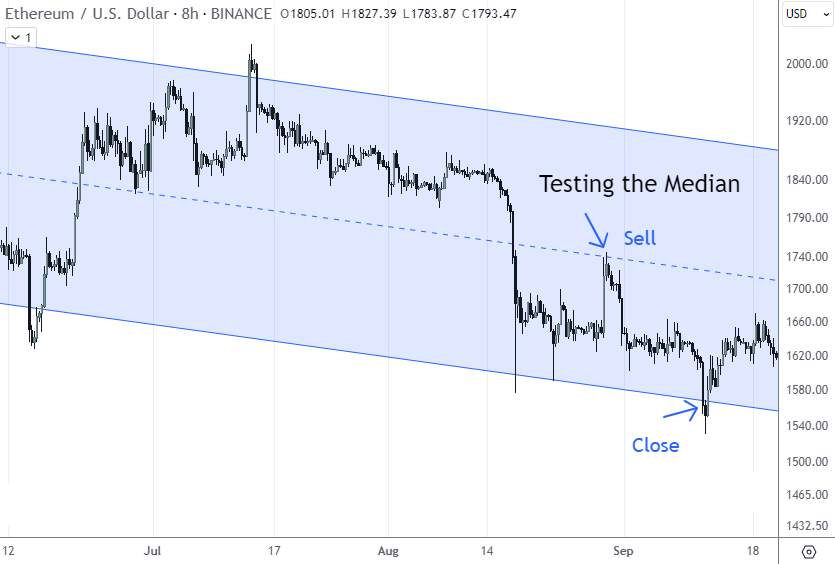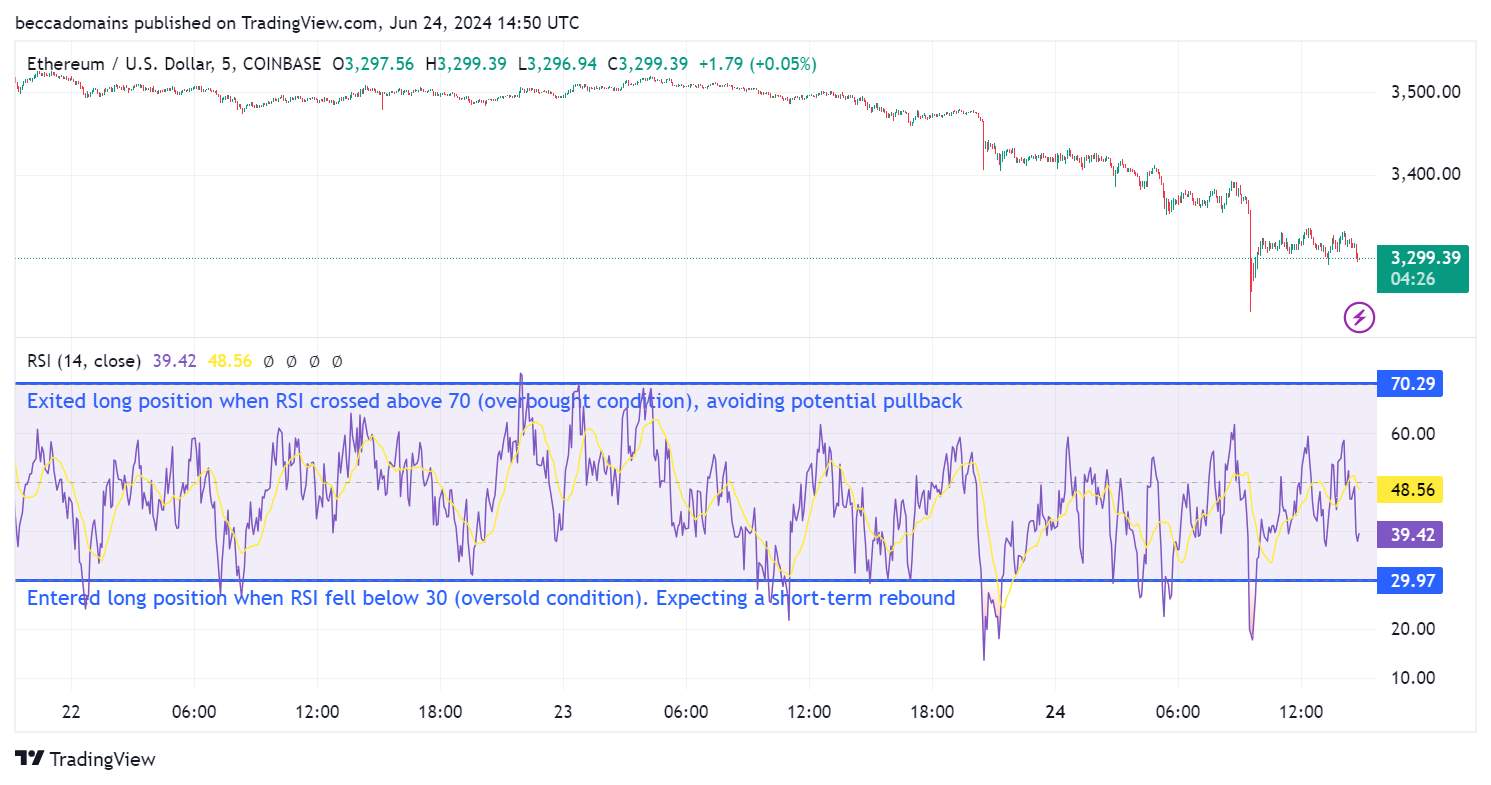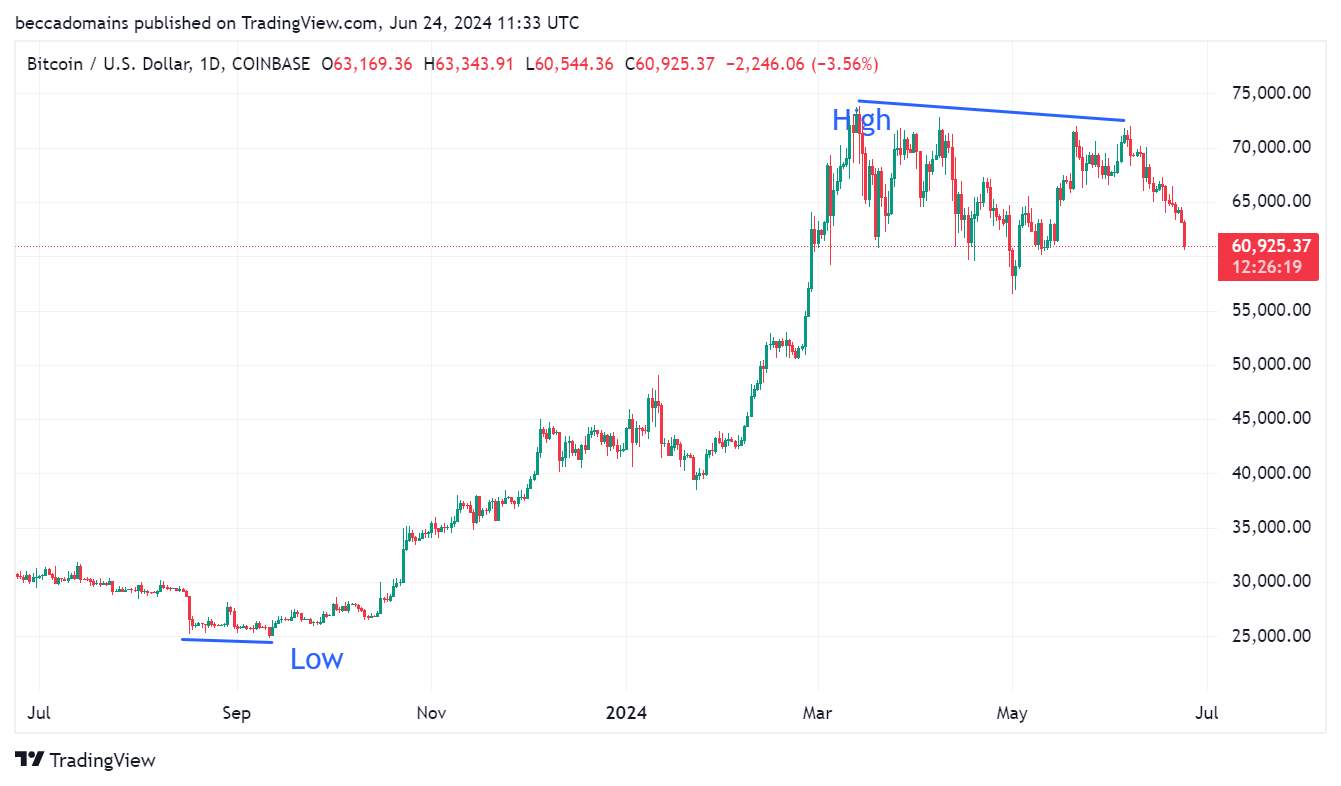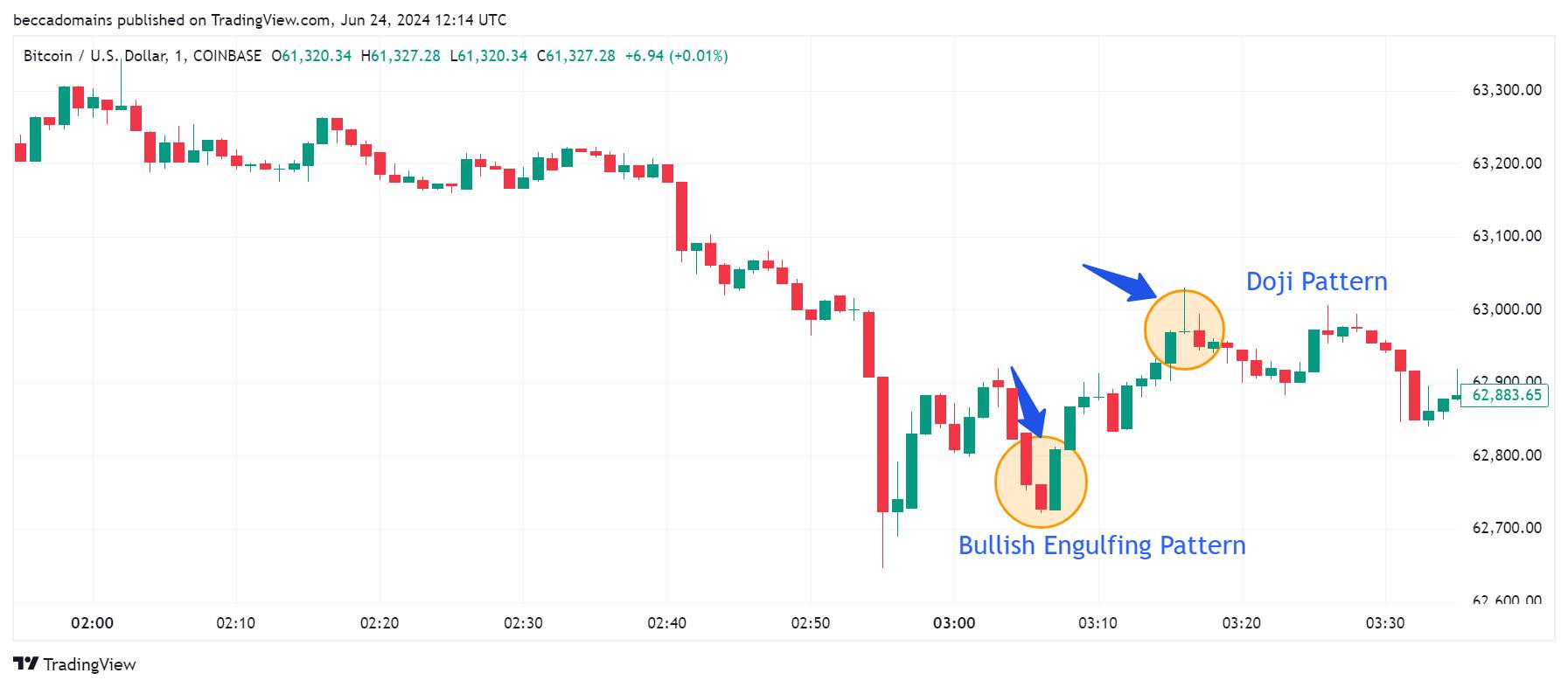Best Cryptocurrency Strategies In 2025



Editorial Note: While we adhere to strict Editorial Integrity, this post may contain references to products from our partners. Here's an explanation for How We Make Money. None of the data and information on this webpage constitutes investment advice according to our Disclaimer.
Best сrypto strategies in 2025:
- Day Trading: Buying and selling cryptocurrencies within a single trading day
- Swing Trading: Capturing short- to medium-term gains over days or weeks
- Scalping: Making small profits from numerous trades throughout the day
- Position Trading: Holding a cryptocurrency for months to years
- Arbitrage Trading: Profiting from price differences between exchanges
- Algorithmic Trading: Using automated software to execute trades based on predefined criteria
Cryptocurrency trading has rapidly evolved into a sophisticated field, attracting both novice and experienced traders. With the volatile nature of digital currencies, having a well-defined trading strategy is very important for success. This article explores the profitable approaches used by current cryptocurrency traders, providing information on important lessons learned, necessary trading methods, top cryptocurrency exchanges, and tips on how to choose the ideal strategy for your trading preferences.
Top crypto trading strategies to master
Understanding and applying various trading strategies can significantly enhance your trading performance. Here are some of the most effective crypto trading strategies:
Day trading
Day trading involves buying and selling cryptocurrencies within a single trading day. This strategy leverages short-term price fluctuations and requires constant monitoring of the market.
Pros: potential for quick profits; numerous trading opportunities.
Cons: time-consuming, high risk due to market volatility.

Swing trading
Swing trading aims to capture short- to medium-term gains over a period of days or weeks. Traders look for potential price swings to enter and exit positions.
Pros: less time-intensive than day trading; opportunities for significant gains.
Cons: requires good timing and analysis skills; exposure to overnight risks.

Scalping
Scalping focuses on making small profits from numerous trades throughout the day. This strategy relies on high trading volumes and tight spreads.
Pros: lower risk per trade, quick returns.
Cons: high transaction costs; requires a fast and reliable trading platform.

Position trading
Position trading involves holding a cryptocurrency for an extended period, ranging from months to years. This strategy is based on long-term market trends and fundamental analysis.
Pros: less time-intensive; potential for substantial long-term gains.
Cons: requires patience and exposure to prolonged market downturns.
Arbitrage trading
Arbitrage trading involves taking advantage of price differences between different exchanges. Traders buy a cryptocurrency on one exchange where the price is lower and sell it on another exchange where the price is higher.Pros: potential for risk-free profit; multiple opportunities across exchanges.
Cons: requires quick execution; transaction fees can reduce profitability.
For example: Statistical arbitrage strategies that use mathematical models to identify and exploit temporary imbalances in the prices of assets with strong correlation. A popular option is pair trading: if one asset becomes relatively cheaper than another, we buy the cheap asset and sell the expensive one.
Algorithmic trading
Algorithmic trading uses automated software to execute trades based on predefined criteria. This strategy relies on complex algorithms and high-speed data processing.
Pros: removes emotional bias, can execute trades faster than humans.
Cons: requires technical expertise, expensive to develop and maintain.
For example: Spoofing and puffing
Spoofing involves placing large orders with the intention of canceling them before execution to artificially create the impression of supply or demand. Layering is placing multiple orders at different prices to create the illusion of market activity. A classic example of a “Layering” scheme is placing several limit orders to create a false level of support or resistance, with subsequent execution of trades at other levels.
Choosing the right crypto exchange is vital for executing your trading strategies effectively. Here are some of the best crypto exchanges to consider:
| Min. Deposit, $ | Coins Supported | Spot Taker fee, % | Spot Maker Fee, % | Foundation year | Open account | |
|---|---|---|---|---|---|---|
| 1 | 2276 | 0,05 | 0 | 2018 | Open an account Your capital is at risk. |
|
| 10 | 278 | 0,4 | 0,25 | 2011 | Open an account Your capital is at risk. |
|
| 10 | 276 | 0,1 | 0,1 | 2018 | Open an account Your capital is at risk. |
|
| 10 | 30 | 0,1 | 0,1 | 2021 | Open an account Your capital is at risk.
|
|
| 30 | 796 | 0,2 | 0,2 | 2018 | Open an account Your capital is at risk. |
Essential insights for crypto traders
Cryptocurrency trading can be highly rewarding but comes with significant risks. Understanding the key takeaways can help traders choose the best strategy and navigate this complex market more effectively.
1. Market volatility:
Cryptocurrencies are known for their price volatility, providing opportunities for substantial gains and losses. Unlike traditional financial markets, the crypto market operates 24/7, leading to constant price changes influenced by global events, regulatory news, and technological advancements.

2. Research and analysis:
Fundamental analysis involves evaluating a cryptocurrency's underlying technology, team, and market potential, while technical analysis focuses on historical price data and trading volumes to predict future movements. Hence, thorough research and technical analysis are pertinent for making informed trading decisions.

3. Risk management:
Implementing risk management strategies, such as stop-loss orders and position sizing, is essential to protecting your investments. Setting stop-loss orders helps limit potential losses by automatically selling a position when it reaches a predetermined price.

4. Diversification:
Diversifying your portfolio can help mitigate risks and increase the chances of achieving steady returns. Holding a mix of different cryptocurrencies can protect against significant losses if one asset underperforms.
5. Continuous learning:
With the crypto market in constant flux, staying updated with the latest trends and developments is a necessary yardstick for long-term success. Engaging with crypto communities, following industry news, and taking online courses can enhance your knowledge and trading skills.
How to select the perfect crypto trading strategy?
Selecting the right trading strategy depends on various factors, including your risk tolerance, time commitment, and trading goals. Here are some tips to help you choose the best strategy:
Assess your risk tolerance
Determine how much risk you are willing to take. High-risk strategies, like day trading and scalping, can offer quick profits but come with greater potential losses. Lower-risk strategies, like position trading, are more suited for long-term gains.Consider your time commitment
Evaluate how much time you can dedicate to trading. Day trading and scalping require constant monitoring, while swing and position trading allow for a more flexible schedule.Leverage tools and resources
Utilize trading tools, such as technical indicators, charts, and news feeds, to inform your trading decisions. Many exchanges offer these tools as part of their platforms.Stay informed
Keep up with market news and trends. Understanding the broader market environment can help you anticipate price movements and adjust your strategies accordingly.Test your strategy
Before committing significant capital, test your chosen strategy with a demo account or small trades. This allows you to refine your approach and gain confidence without risking substantial funds.Adapt and evolve
Be prepared to adapt your strategy as market conditions change. The crypto market is highly dynamic, and a strategy that works today may not be effective tomorrow. Continuous learning and flexibility are key to long-term success.
Understand your financial goals and risk tolerance
Selecting the perfect crypto trading strategy can be challenging but immensely rewarding when done correctly. Here’s my expert opinion on how to approach this crucial decision.
First and foremost, understand your financial goals and risk tolerance. Are you looking for short-term gains, or are you in it for the long haul? Do you prefer a steady, lower-risk approach, or are you willing to take on more risk for potentially higher rewards? Your answers to these questions will guide your strategy selection.
Your level of knowledge and experience in the crypto market should also influence your choice. Beginners might start with simpler strategies like buy and hold (HODL), while more experienced traders could explore day trading or swing trading.
I recommend for beginners opting for a HODL strategy. For instance, you might buy Bitcoin (BTC) or Ethereum (ETH) and hold them for several years, believing in their long-term potential.
I recommend for experienced traders using a swing trading strategy, buying altcoins like Cardano (ADA) or Polkadot (DOT) when they dip and selling them when their prices rise over several days or weeks.
Consider how much time you can dedicate to trading. Strategies like day trading or scalping require constant monitoring of the markets and quick decision-making, while position trading or HODL are less time-intensive.
Additional recommendations:
Backtesting: Before committing real money, backtest your chosen strategy using historical data to see how it would have performed.
Paper Trading: Practice your strategy with a demo account to gain confidence without risking actual capital.
Risk Management: Always use stop-loss orders to protect against significant losses and never invest more than you can afford to lose.
By carefully considering these factors and continuously refining your approach, you can select and implement a crypto trading strategy that aligns with your goals, risk tolerance, and lifestyle. Remember, the perfect strategy is one that fits you personally and is adaptable to the ever-changing crypto market.
Conclusion
Successful crypto trading requires a combination of knowledge, strategy, and discipline. By understanding key takeaways, exploring different trading strategies, choosing the right exchanges, and following practical tips for selecting a strategy, you can enhance your chances of success in the dynamic world of cryptocurrency trading. Always remember to stay informed and continuously refine your approach to stay ahead in this fast-paced market.
FAQs
How can diversification improve a crypto trading strategy?
Diversification reduces risk by spreading investments across different cryptocurrencies and strategies. This approach mitigates the impact of a poor-performing asset and can enhance overall portfolio stability and returns.
Why is continuous learning important for crypto traders?
The crypto market is highly dynamic, with constant technological advancements and regulatory changes. Continuous learning helps traders stay informed, adapt their strategies to current market conditions, and improve their trading skills for better decision-making.
How can I minimize risks in crypto trading?
Minimizing risks involves diversifying your portfolio, setting stop-loss orders, and not investing more than you can afford to lose. It's also crucial to stay informed about market trends and developments.
What are the most important tools for crypto traders?
Key tools for crypto traders include technical analysis charts, trading indicators, news feeds, and portfolio tracking apps. These tools help traders make informed decisions and track their performance effectively.
Related Articles
Team that worked on the article
Parshwa is a content expert and finance professional possessing deep knowledge of stock and options trading, technical and fundamental analysis, and equity research. As a Chartered Accountant Finalist, Parshwa also has expertise in Forex, crypto trading, and personal taxation. His experience is showcased by a prolific body of over 100 articles on Forex, crypto, equity, and personal finance, alongside personalized advisory roles in tax consultation.
Chinmay Soni is a financial analyst with more than 5 years of experience in working with stocks, Forex, derivatives, and other assets. As a founder of a boutique research firm and an active researcher, he covers various industries and fields, providing insights backed by statistical data. He is also an educator in the field of finance and technology.
As an author for Traders Union, he contributes his deep analytical insights on various topics, taking into account various aspects.
Mirjan Hipolito is a journalist and news editor at Traders Union. She is an expert crypto writer with five years of experience in the financial markets. Her specialties are daily market news, price predictions, and Initial Coin Offerings (ICO).
Bitcoin is a decentralized digital cryptocurrency that was created in 2009 by an anonymous individual or group using the pseudonym Satoshi Nakamoto. It operates on a technology called blockchain, which is a distributed ledger that records all transactions across a network of computers.
Day trading involves buying and selling financial assets within the same trading day, with the goal of profiting from short-term price fluctuations, and positions are typically not held overnight.
Backtesting is the process of testing a trading strategy on historical data. It allows you to evaluate the strategy's performance in the past and identify its potential risks and benefits.
Crypto trading involves the buying and selling of cryptocurrencies, such as Bitcoin, Ethereum, or other digital assets, with the aim of making a profit from price fluctuations.
Ethereum is a decentralized blockchain platform and cryptocurrency that was proposed by Vitalik Buterin in late 2013 and development began in early 2014. It was designed as a versatile platform for creating decentralized applications (DApps) and smart contracts.






























































































































